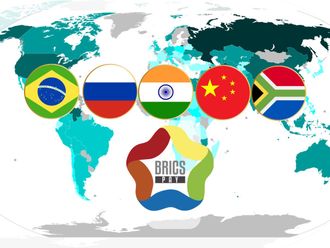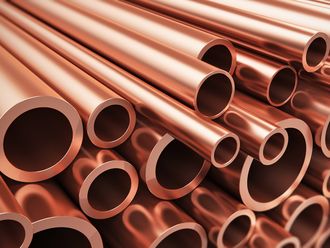
RIYADH
Top Saudi central bank officials painted a highly positive picture of the economy at a rare news conference on Wednesday, saying growth was likely to strengthen and they were not worried by deflation.
Latest official data showed the economy in recession during the second quarter, with gross domestic product shrinking from the previous quarter and the non-oil sector expanding only 0.6 per cent from a year earlier.
Annual consumer price inflation was negative for an eighth consecutive month in August. The unemployment rate among Saudi citizens edged up to 12.8 per cent in the second quarter from 12.7 per cent in the first.
However, central bank governor Ahmad Al Kholifey said he expected a positive economic performance in the coming period.
“From the indicators we saw in the first half, the non-oil sector’s growth is still positive. From the indicators we saw, especially for consumption, they’re also positive, and I hope that will reflect on the non-oil sector,” he said.
Another central bank official said the bank was not worried about deflation because consumption was rising. Officials also said they saw no reason for the Saudi riyal to fall in the forward foreign exchange market, and that there was no concern about banks’ bad loans.
Asked about the direction of Saudi interbank money rates (Saibor), Ayman Al Sayari, deputy central bank governor for investment, said: “Today’s levels reflect the level of liquidity in the system, which appears to be ample. We don’t expect any aggressive movements in Saibor up or down, other than perhaps a reflection of the interest rates in the United States.” Saudi officials said in August that the government was willing to consider funding itself partly in Chinese yuan, a reflection of Saudi Arabia’s growing economic ties with China.
Asked about this, Sayari said on Wednesday that there had been no material change in the central bank’s approach to the yuan in its foreign reserves since last year. The vast majority of the central bank’s net foreign assets, which totalled $480 billion in August, are believed to be in US dollars.
There has been no radical change in the central bank’s investment policy, Kholifey said. He said he did not expect the government to transfer any of the foreign reserves to the Public Investment Fund, the sovereign fund that Riyadh is building up so that it can lead big economic development projects.
State funds consolidation
Meanwhile, Saudi Arabia’s government has created a body centralising control of its economic development funds as it prepares to spend billions of dollars to jump-start growth.
Austerity policies in the past two years have begun to cut a huge state budget deficit caused by low oil prices, but as a result, growth of the non-oil economy has slowed to a crawl. So the government wants to use roughly half a dozen state funds to help develop non-oil industries and create jobs.
Control of these funds has been spread between various ministries and agencies, however, making coordination difficult at times. The new body, the National Development Fund (NDF), supervises and links together the individual funds, the official SPA news agency said on Wednesday.
With a board appointed by King Salman, the NDF will oversee institutions including the Saudi Industrial Development Fund (SIDF), the Saudi Fund for Development, the Agricultural Development Fund, the Social Development Bank and the Human Resources Development Fund, SPA said.
The SIDF, which has capital of at least 65 billion riyals ($17.3 billion), provides loans to industries ranging from chemicals to building materials and food.












